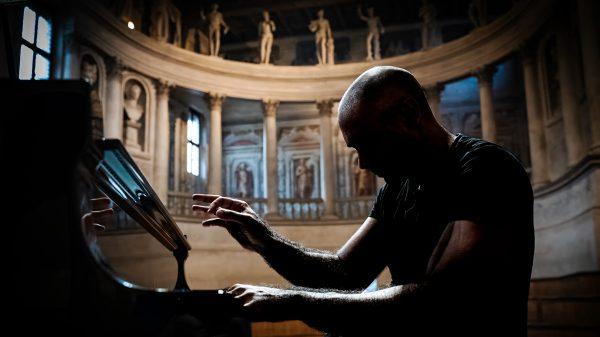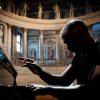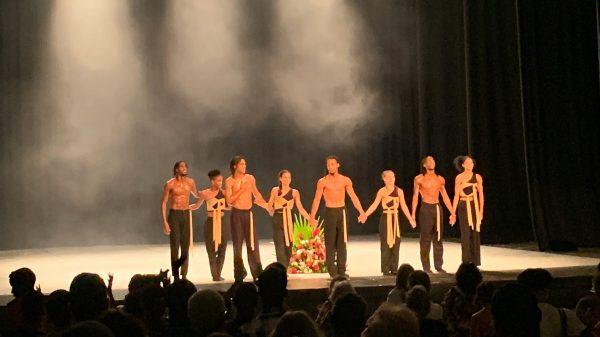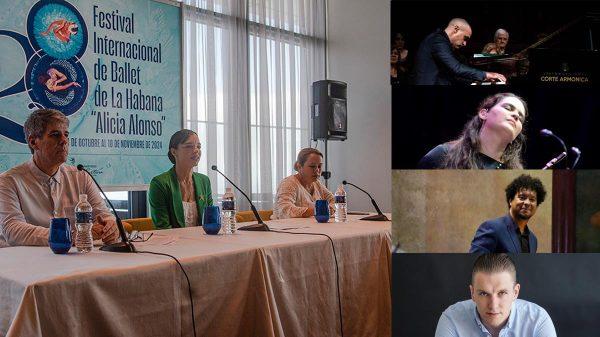More stories from Habana Clásica…
Many Havana residents waited for the night of Thursday, November 10, this year, of the Habana Clásica Festival. In its IV edition, Habana Clásica reinvents itself, thanks to the collaboration of many outstanding hands, including the Esteban Salas Musical Heritage Cabinet, the Swiss Embassy in Cuba, leading donor of this year’s edition and, of course, the excellent Marcos Madrigal, its Artistic Director. The Basílica Menor del Convento San Francisco de Asís, full as never before, witnessed one of these special moments.
Linus Roth, a German violinist of exceptional form, arrived on stage. Performer with the great orchestras of Europe and the United States, pedagogue, faithful defender of composers unjustly forgotten by history. Linus, like a Germanic angel spent a few days in Havana, bringing with him a 1703 Stradivarius baptized as the “Dancla”, which belonged for three decades to Charles Dancla, master of Brindis de Sala, our King of the Octaves, with whom the violin could coincide in the same space and, almost two centuries later, reach us unscathed to Havana, for more honors to his memory.
The hall was expected to be full. The commentary of a special event had been circulating around Havana for days. Linus is accompanied at the piano by Marcos Madrigal, no less, under the halo of a red light, very operatic. Linus opens with a speech, in perfect Spanish, to thank the full hall and Cuban kindness.
Soon Brahms sounds, Sonata No. 3 Opus 108, in D minor, a tonality that the German rarely used to avoid entering the imposing shadow of Beethoven’s Ninth Symphony. The last of Brahms’ three works for piano and violin, the most muscular of the set. Ideal for the piano of Marcos Madrigal, who accompanies Linus masterfully, in his own starring space.
Four movements and the audience brings the Basilica to life, standing, overwhelming ovations. The Cuban public, not versed in academy music, but in sensibilities, appreciates the aesthetic presence of the new.
The hall gets ready and emotions settle down. On stage, Daiana Garcia and her Havana Chamber Orchestra. That, apart from the musical and literary technicalities, the Chamber Orchestra, a fervently feminine space, has accompanied the most beautiful concerts that have crossed the Cuban auditorium. It is an honor to see Maestra Daiana, with the strength that invokes her femininity, shine on stage.
They play Mendelssohn this time, Concerto for Violin and String Orchestra, one of the most performed violin concertos of all time. In perfect cadence, the Orchestra, together with Marcos, give space to Linus, as if surrendering the music.
From Mendelssohn to Antonio Bazzini, an Italian who brings music closer to our Latinity. La Ronde des Lutins, Danza de duendes, as would be its translation into Spanish, a fantastic Scherzo to close the evening with joyful tonalities. The bouncing arpeggios and the speed of Linus Roth on the violin leave the audience speechless, which, after the last melody, does not pale before the gratitude. The crowded Basilica Menor, standing, shows all its approval to the violinist who has more than fulfilled the expectations before the curious ears of the Cuban public.
Very interesting musicians have passed through our stages thanks to the merit that Cuban Art has bequeathed us, turning us into an obligatory capital in the Caribbean, but this concert will remain in our memory for a long time. More than one cry was seen in the hall, even the Masters present left their chairs to applaud.
November has come to our country as an incentive, full of virtuosity and wonderful music. Friends who come to the Festival and give the public what it deserves, memorable evenings, old melodies and a Stradivarius, with something of Cuba, that sounds before us.

From our staff writers and editors.














